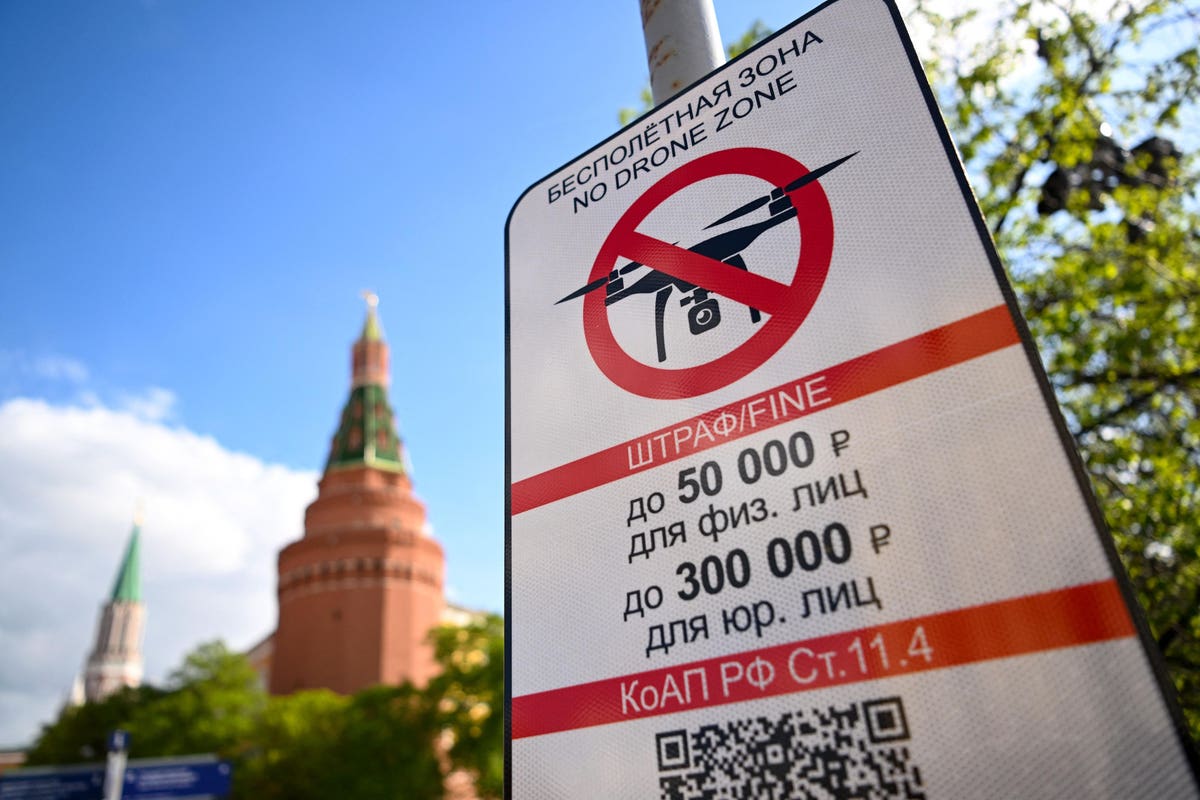Russian officials reported that Moscow came under attack from drones last night. Four of them were shot down and a fifth was brought down by electronic jamming, according to Russian sources, which blamed the attacks on Ukraine. Ukraine has declined to comment on the attacks and as a rule does not claim responsibility for any strikes on Russian territory.
According to Reuters, two of the drones were shot down near a village 19 miles southwest of Moscow, and landings and takeoffs were halted for several hours at Moscow’s Vnukovo Airport, one of three that serve the city. One drone was reportedly shot down near Kubinka to the west of Moscow, site of a Russian Air force base which hosts the nation’s aerobatic display team.
This is the third attack of this type. On 3rd May a small drone was filmed exploding over the Kremlin, while at least eight drones carried out attacks on Moscow on May 29th, some of them coming down in an area where Putin has a villa.
No images have yet emerged of the drones involved. In previous attacks, analysts tentatively suggested that at least one of the drones looked like a design known as Beaver, built as a private initiative to attack Russian by Ukrainian fundraiser and activist Ilhor Lachen. We have also previously seen attacks by ‘Alibaba drones,’ assembled from hobby kits supplied by the Chinese online wholesaler. In particular attack drones based on the $9,500 Mugin-5 have been identified in multiple attacks in the Crimea and elsewhere.
Ukraine also now has military-grade attack drones. At the beginning of the year, state enterprise Ukroboronprom announced it was starting deliveries of attack drones with a range of over 600 miles with a 165-pound warhead, but no images of the new weapon have been shown yet.
Seen from one perspective, the latest drone attack is not too serious. All were apparently brought down, no obvious damage was done, and Moscow continues today with business as usual. Apart from the Russian media loudly condemning the attacks as ‘terrorism’ the attacks are getting little coverage.
However, the latest incident should raise three large red flags for anyone in Moscow.
First is the question of air defence. If the drones did come from Ukraine – which is unknown at this time – then they will have flown right through the layered air defenses protecting the front line forces, penetrated the electronic jamming meant to stop Ukrainian drones crossing into Russia, crossed several hundred miles of Russian territory where they should have been tracked and intercepted by Russian fighters, and finally breached the air defenses to the capital itself before being brought down…or perhaps coming down on their own.
As with the strikes by Ukrainian Bayraktar TB2 drones in the opening stages of the invasion, Russia’s apparent inability to stop drones looks like a symptom of profound problems. This is especially true since after the last attack Putin had vowed that Moscow’s air defenses would be strengthened. If the drones get so far that airports have to be closed, then the measures to stop them are not working.
Secondly there is the issue of friendly fire. Air raids are hazardous not just because of bombs from the enemy, but because anti-aircraft weapons may harm people on the ground. There were many reports of civilian casualties from falling anti-aircraft shells in London during the Blitz in 1940, though the government refused to provide figures. In the bizarre Battle of Los Angeles in 1942 false reports that Japanese aircraft were attacking the city led to defenders firing more than 1400 shells, damaging a number of houses and putting a crater on long Beach golf course. Five people died of heart attacks and in car accidents.
There is also of course the chance of a passenger aircraft getting hit by ‘friendly fire,’ and area where Russian air defenses have some history. A fear of this may have been what grounded aircraft at Vnukovo.
Moscow has now become a war zone, and this will inevitable impact the lives of its citizens as the drone strikes continues.
Thirdly and perhaps most importantly, the drones have so far failed to have much effect but, as with the waves of Iranian-supplied Shahed kamikaze drones launched at Kyiv, it is a numbers game. One success could change everything and the targeting of an air base is a shrewd move. Many drones may be brought down or fail to find a target, but striking a Russian military jet would more than pay for the cost of the entire drone campaign. Russia has already been subjected to this type of attack when their Khmeimim air base in Syria, was targeted repeatedly by locally-made kamikaze drones.
There is a close parallel with Yemen, where the Houthi rebels carried out a campaign of sending low-cost long-range drones to strike airports and oil facilities in Saudi Arabia and the UAE
UAE
This third drone attack sends the message that Moscow is a target, or at least the military and government facilities in and around it. And that cannot fail to affect Russian thinking about a war which was distant and is now happening all around them.
Read the full article here





